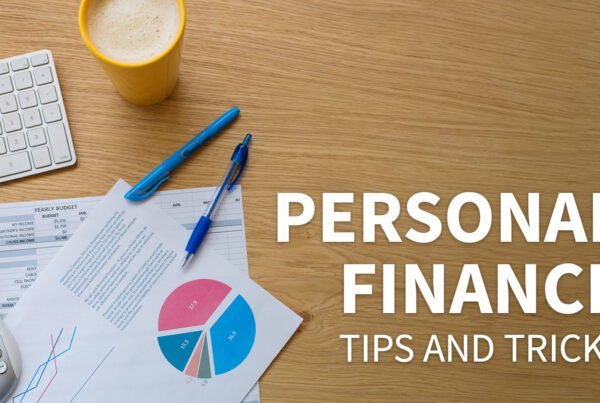Building an emergency fund is one of the most critical steps toward financial stability and peace of mind. Whether it’s a medical emergency, unexpected car repair, or job loss, having a cushion of savings can protect you from falling into debt. In this article, we’ll discuss how to build an emergency fund, offering practical strategies to help you prepare for life’s uncertainties.
What Is an Emergency Fund?
An emergency fund is a dedicated amount of money set aside to cover unexpected expenses. Unlike regular savings, this fund should only be used for true emergencies, such as medical bills, major home repairs, or sudden unemployment. Most financial experts recommend saving at least three to six months’ worth of living expenses in an emergency fund.
Why Is an Emergency Fund Important?
Without an emergency fund, a financial crisis can quickly spiral out of control, leading to high-interest debt, missed payments, and financial stress. Having a fund helps you avoid relying on credit cards or loans when unforeseen expenses arise. It also provides peace of mind, knowing that you’re financially prepared for whatever life throws your way.
How to Build an Emergency Fund: 7 Key Steps
Here’s a step-by-step guide on how to build an emergency fund effectively.
1. Set a Realistic Savings Goal
The first step in building an emergency fund is setting a clear and realistic savings goal. Most experts recommend aiming for 3-6 months of living expenses. To calculate this, consider your essential monthly costs, such as rent, utilities, groceries, insurance, and transportation. Multiply that amount by three or six to determine your target.
For example, if your monthly expenses total $2,000, you should aim to save between $6,000 and $12,000.
Key points:
- Aim for 3-6 months of living expenses.
- Calculate based on essential monthly costs.
- Adjust the goal based on your personal circumstances.
2. Start Small and Build Consistently
It can feel overwhelming to save several thousand dollars, especially if you’re starting from scratch. The key is to start small and save consistently. Even if you can only set aside $25 or $50 per week, the important thing is to build the habit of saving.
Over time, those small amounts will add up. For example, saving just $50 a week will result in $2,600 in a year—enough to cover smaller emergencies and unexpected bills.
Key points:
- Start with small, manageable amounts.
- Consistency is more important than the amount.
- Every dollar saved brings you closer to your goal.
3. Automate Your Savings
One of the easiest ways to build an emergency fund is by automating your savings. Set up automatic transfers from your checking account to a dedicated emergency savings account every payday. This ensures that you’re consistently saving without the temptation to spend that money elsewhere.
Many banks allow you to set up recurring transfers, so you don’t have to think about it. This “pay yourself first” approach helps prioritize your emergency fund.
Key points:
- Automate savings transfers from checking to savings.
- Pay yourself first to ensure consistent progress.
- Avoid the temptation to spend the money elsewhere.
4. Cut Unnecessary Expenses
If you’re struggling to find extra money to save, consider reviewing your monthly expenses to identify areas where you can cut back. Look for non-essential spending, such as dining out, streaming subscriptions, or impulse shopping. Redirect those funds toward your emergency fund.
For example, cutting out a $30 monthly streaming service and $50 in dining out could free up $80 a month for savings, giving you an extra $960 per year.
Key points:
- Review and cut unnecessary expenses.
- Redirect saved money to your emergency fund.
- Small sacrifices can lead to big savings over time.
5. Save Windfalls and Extra Income
Whenever you receive unexpected income, such as a tax refund, bonus, or gift, consider putting a portion—or all of it—into your emergency fund. Windfalls provide a great opportunity to boost your savings without affecting your regular budget.
For instance, if you receive a $1,200 tax refund, depositing that money directly into your emergency fund can make a significant difference in your savings goal.
Key points:
- Save windfalls such as tax refunds or bonuses.
- Use extra income to accelerate your savings.
- Avoid the temptation to spend unexpected money.
6. Use a High-Interest Savings Account
Maximize your savings by keeping your emergency fund in a high-interest savings account. These accounts typically offer better interest rates than standard savings accounts, allowing your money to grow faster over time.
While it’s important to prioritize liquidity (easy access to your funds), a high-interest account will help your emergency fund earn more, even if it’s just a small amount of interest.
Key points:
- Choose a high-interest savings account for better returns.
- Ensure the account is easily accessible in case of emergency.
- Let your money work for you while you save.
7. Avoid Using the Fund for Non-Emergencies
The most important rule of maintaining an emergency fund is to avoid dipping into it for non-emergencies. This money should be reserved for unexpected, urgent expenses—such as medical bills, major home repairs, or temporary job loss. Using it for vacations or luxury purchases defeats the purpose of building a financial safety net.
If you’re tempted to use your emergency fund for non-essential spending, create a separate savings account for discretionary expenses like vacations or big purchases.
Key points:
- Only use the fund for genuine emergencies.
- Keep it separate from other savings accounts.
- Create a separate account for discretionary spending.
Conclusion
Knowing how to build an emergency fund is an essential part of financial planning and security. By setting a realistic savings goal, automating contributions, cutting unnecessary expenses, and using windfalls wisely, you can steadily build a fund that protects you from life’s uncertainties. Remember, even small amounts saved consistently can make a big difference in the long run. Prioritize your emergency fund, and enjoy the peace of mind that comes with being financially prepared.







